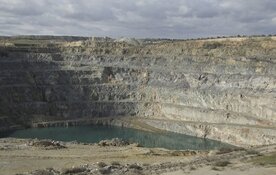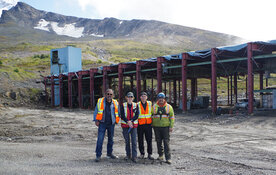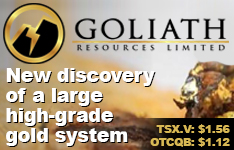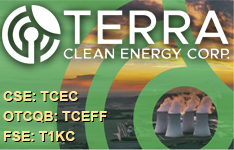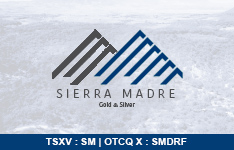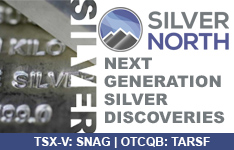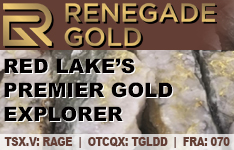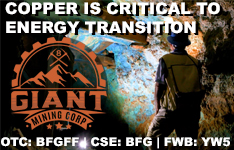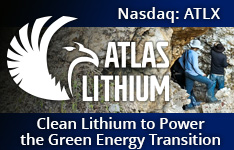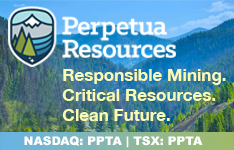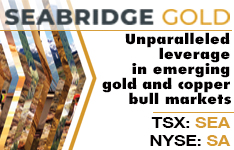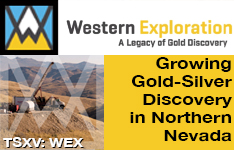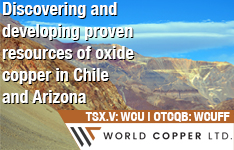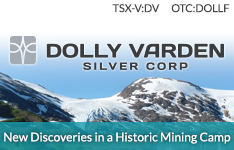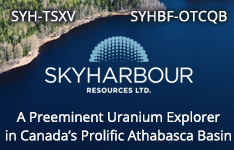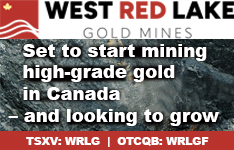West Red Lake Gold Mines Ltd. (WRLG:TSX.V; WRLGF:OTCQB; FRA:UJO) has released a detailed update on its Madsen Mine in Ontario’s Red Lake Gold District, outlining how test mining and bulk sample findings are directly influencing its current mine plan. The company reported that the results have led to larger shapes in the mine designs, greater mining efficiencies, and the application of lower-cost methods, notably long hole stoping.
The bulk sample program, completed across six stopes in three different zones, showed a close match between anticipated and actual results for tonnes, grade, and contained gold. According to the company, this confirmed the validity of its geological and mining models. The test also proved successful in examining stope flexibility, including mining adjacent to historic stopes, which could unlock previously constrained resource areas.
As it completes detailed mine engineering, West Red Lake is applying a consensus long-term gold price of US$2,350 per ounce in mine design, in contrast to the US$1,680 per ounce used in the previous Pre-Feasibility Study (PFS). At the lower price, 60% of the mine plan relied on small, high-grade stopes mined using selective and higher-cost cut-and-fill mining methods. However, the final mine plan designed at the higher gold price incorporates more tonnage and ounces at lower grades by allowing inclusion of the mineralized halo zones surrounding high-grade lenses.
“Close reconciliation between expected and actual tonnes and grade in the bulk sample suggests that the Company’s approach — appropriate definition drilling, responsive mine engineering, and disciplined, efficient mining — is creating the ability to mine at Madsen according to plan,” the company stated in a news release.
Larger stopes and stope clusters (termed “mining complexes”) are now being prioritized. These zones can reduce per-tonne mining costs, as they are suitable for long hole stoping, and also spread access development costs across a larger number of ounces. For example, the South Austin 4447 complex saw a 212% increase in tonnage and 320% increase in ounces following definition drilling.
The revised mine design may also allow more of the existing indicated resource to be considered for extraction. The PFS outlined a probable reserve of 478,000 ounces at 8.2 (grams per tonne) g/t gold, based on 1.87 million tonnes mined over seven years. This reserve was a fraction of the total indicated resource of 1.65 million ounces in 6.9 million tonnes at 7.4 g/t gold. West Red Lake noted that applying a higher gold price could increase mine life and potentially improve long-term economics.
Additional updates included the resignation of Jasvir Kaloti as Corporate Secretary. Harpreet Dhaliwal, the current Chief Financial Officer, will assume the role on an interim basis.
Gold Demand Strengthens as Prices Climb and Investor Sentiment Shifts
Investor interest in gold remained strong heading into early June, with several developments signaling ongoing demand and favorable pricing trends. Despite gold’s recent rally, a May 26 update from analyst John Rubino noted that generalist investors had yet to fully re-engage with the sector. “Gold and gold miner ETFs seem to be an afterthought for the average investor,” he observed, in contrast to previous bull cycles when broader participation drove higher allocations. However, Rubino pointed to signs of growing enthusiasm, particularly at the retail level. “Costco customers’ eagerness to put multiple ounces of gold on their store credit cards implies the kind of enthusiasm that could easily spread to equity investors,” he wrote.
Demand was strong enough to prompt new restrictions at retail outlets. On May 28, VBL reported that Costco had reduced daily purchase limits on some gold products from five bars to two, citing higher demand and tightening inventory. The company’s 1-ounce gold bars were priced at US$3,279.99, up from around US$2,000 two years earlier. Spot gold prices had risen more than 70% during that time, setting new all-time highs in April.
Sector commentary also pointed to macroeconomic and technical factors behind gold’s resilience. In a May 27 video, Goldfinger Capital’s Robert Sinn characterized recent price movements as “constructive bull market behavior,” despite broader market distractions. He noted that technical indicators remained strong and highlighted that “miners are beginning to outperform the metal.”
By June 2, safe-haven demand had returned to the spotlight. A report from Reuters showed spot gold reaching US$3,344.49 per ounce, its highest level since May 23. UBS analyst Giovanni Staunovo attributed the rise in part to heightened geopolitical concerns, stating that “rising geopolitical tensions – including the escalation in tensions between Ukraine and Russia – [was] lifting demand for safe haven assets such as gold.” The report also cited a weakening U.S. dollar and uncertainty around U.S. trade policy as additional contributors to gold’s recent momentum.
Analysts Maintain Buy Ratings Backed by Robust Project Fundamentals
Analyst sentiment remained positive for West Red Lake Gold Mines Ltd. following continued progress at its Madsen project in Ontario’s Red Lake district. On May 7, Matthew O'Keefe of Cantor Fitzgerald reiterated a Buy rating with a target price of CA$2.20 per share, representing a 219% potential upside from the trading price of CA$0.69 at the time. O’Keefe cited the company’s recent bulk sample results as a key de-risking milestone, stating that the 14,490-tonne program validated the geological model and demonstrated consistency in grade and mill recovery. “The positive test results derisk the project further,” he wrote.
Later in the month, on May 30, Taylor Combaluzier of Red Cloud Securities also reaffirmed a Buy rating, raising his target price to CA$2.50 per share. At the time of his report on May 30, West Red Lake Gold was trading at CA$0.84, implying a 198% potential return. Combaluzier emphasized the quality of the project’s resource and infrastructure, as well as its scalability and near-term cash flow potential. He noted that “Madsen has a high-grade resource, existing infrastructure, deposit and mill expansion potential, the potential for further cost savings and now the opportunity for near-term free cash flow.” His valuation was based on a net present value of CA$315 million and a 255% internal rate of return using a gold price of US$2,000 per ounce.
Combaluzier added that elevated gold prices, such as US$3,300 per ounce, could improve project flexibility by allowing lower-grade zones to be mined profitably using long hole stoping instead of more expensive cut-and-fill methods. He also pointed to potential gains from integrating nearby deposits, particularly Rowan, which hosts a resource of 312,000 ounces at 10.97 g/t gold. “Rowan could be one of the first deposits used in a potential future hub and spoke model,” he wrote, suggesting the deposit could support increased throughput and extended mine life.
Both analysts highlighted operational changes under the current management team. Combaluzier noted that the company had made strategic investments in underground development and opted to purchase rather than lease equipment—moves intended to optimize costs and improve mining efficiency. Together, the reports reflected ongoing institutional support for West Red Lake Gold’s revised execution plan and the long-term potential of its Madsen project.
Strategic Momentum at Madsen and Beyond
The company’s strategic outlook for 2025 builds on recent technical validation and a growing resource base. According to West Red Lake Gold’s investor materials, the mine ramp-up is scheduled to continue in the second half of 2025, targeting processing rates of 800 tonnes per day. The company had approximately CA$31 million in cash as of February 26 and reported US$7.7 million in gold sales from the bulk sample to date
West Red Lake Gold’s development pipeline extends beyond the Madsen deposit. The Rowan deposit, which hosts near-surface indicated resources at 12.8 g/t gold, is expected to be bulk sampled by 2027 or 2028. Other areas such as the Fork deposit, which contains a newly identified high-grade core, and multiple underexplored targets within the Madsen and Confederation zones, are also under review.
With high-definition drilling spaced at 7 meters, the company aims to mitigate geological risk and refine resource modeling. As outlined in the presentation, this tight spacing has already yielded significant increases in stope size and definition of high-grade gold lenses. The company also maintains a safety record notably stronger than the industry average, reporting a 2024 total reportable injury frequency of 1.0, well below the Ontario mining sector’s 2023 average of 4.53
The Madsen mill, which resumed operations after a 28-month hiatus, continues to support test mining and stockpile development. The facility’s 95.7% gold recovery rate and 800 tpd capacity are central to the company’s near-term production profile.
From a valuation perspective, the company estimates a US$496 million net present value (NPV) for Madsen using a US$2,640 gold price and a 5% discount rate. The updated outlook includes a forecast of US$93 million in average annual free cash flow over six full production years
West Red Lake Gold is one of only four single-asset companies on track to reach production in 2025, which the company views as a key differentiator amid investor interest in new North American gold producers.
 Streetwise Ownership Overview*
Streetwise Ownership Overview*
West Red Lake Gold Mines Ltd. (WRLG:TSX.V; WRLGF:OTCQB; FRA:UJO)
Ownership and Share Structure
Strategic investor Sprott Resource Lending Corp. holds about 8%. Institutions hold about 30%, management, insiders, and advisors hold about 10%, and the remaining shares are held by retail investors.
The company's market cap is CA$290 million. The 52-week range for the stock is CA$0.52 to CA$1.04.
| Want to be the first to know about interesting Gold investment ideas? Sign up to receive the FREE Streetwise Reports' newsletter. | Subscribe |
Important Disclosures:
- West Red Lake Gold is a billboard sponsor of Streetwise Reports and pays SWR a monthly sponsorship fee between US$4,000 and US$5,000.
- As of the date of this article, officers and/or employees of Streetwise Reports LLC (including members of their household) own securities of West Red Lake Gold.
- James Guttman wrote this article for Streetwise Reports LLC and provides services to Streetwise Reports as an employee.
- This article does not constitute investment advice and is not a solicitation for any investment. Streetwise Reports does not render general or specific investment advice and the information on Streetwise Reports should not be considered a recommendation to buy or sell any security. Each reader is encouraged to consult with his or her personal financial adviser and perform their own comprehensive investment research. By opening this page, each reader accepts and agrees to Streetwise Reports' terms of use and full legal disclaimer. Streetwise Reports does not endorse or recommend the business, products, services or securities of any company.
For additional disclosures, please click here.





